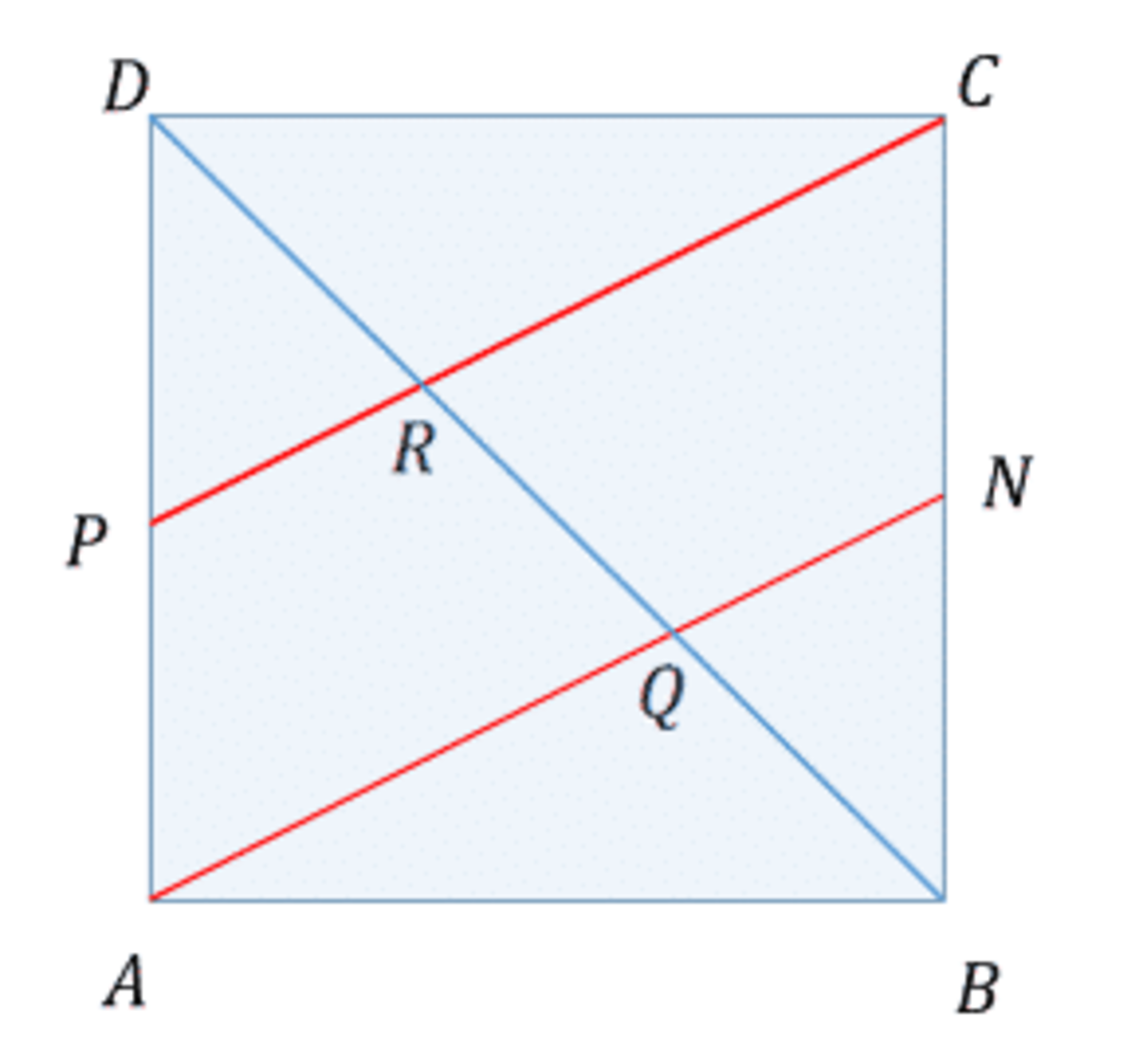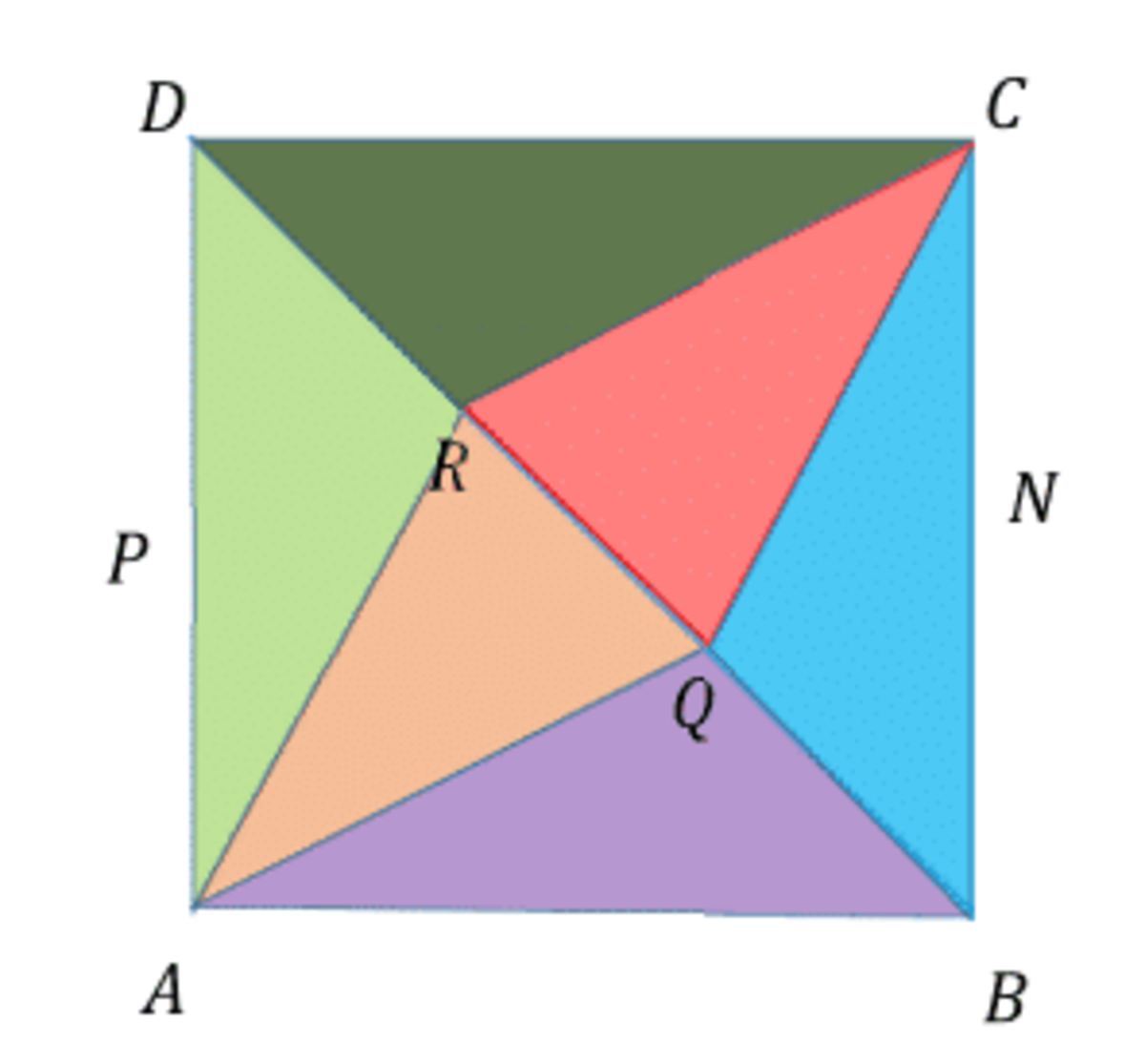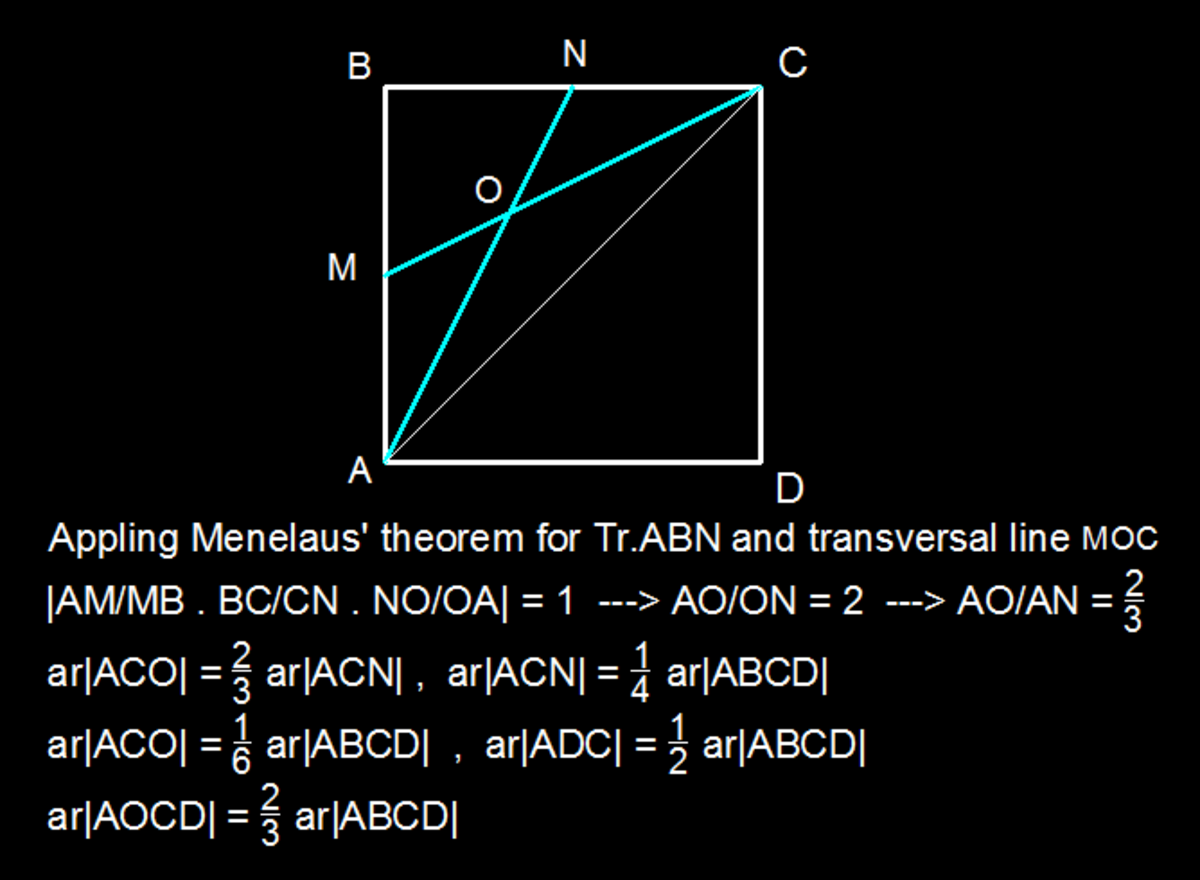A geometry problem by Hemamalinivenkatasesha Nanduri
ABCD is a square where AB and BC are adjacent sides of the square M is the midpoint of AB,N is the midpoint of BC. AN and CM intersect at O.
Find the ratio of area of AOCD to the area of ABCD.
The answer is 0.666.
This section requires Javascript.
You are seeing this because something didn't load right. We suggest you, (a) try
refreshing the page, (b) enabling javascript if it is disabled on your browser and,
finally, (c)
loading the
non-javascript version of this page
. We're sorry about the hassle.



Let C N = N B = B M = M A = a , O G = k and N G = x .
Since △ O N G ∼ △ A N B , using similarity properties,we get
N B N G = A B O G ⇒ a x = 2 a k ⇒ k = 2 x .
Since △ O C G ∼ △ M C B , using similarity properties,we get
C B C G = M B O G ⇒ 2 a ( a + x ) = a k ⇒ a + x = 2 k ⇒ x = 3 a and k = 3 2 a .
The area of △ O C N = 2 1 × O G × C N = 3 a 2 .
The area of △ A N B = 2 1 × A B × N B = a 2 .
The area of the square A B C D = ( 2 a ) 2 = 4 a 2 .
The area of quadrilateral A O C D = Area of square − Area of △ O C N − Area of △ A N B = 3 8 a 2 .
Therefore the ratio of the Area of quadrilateral A O C D to the Area of the A B C D = 3 8 a 2 : 4 a 2 = 3 2 = 0 . 6 6 6 .